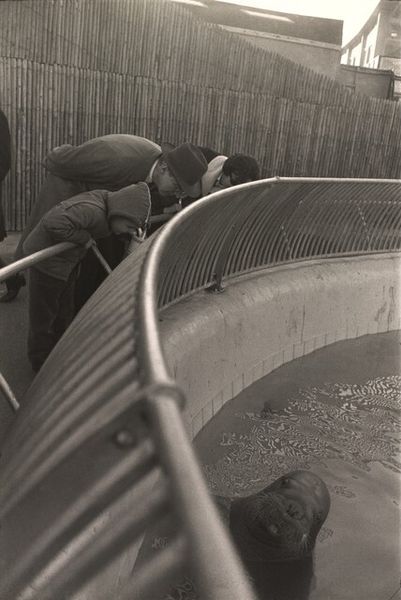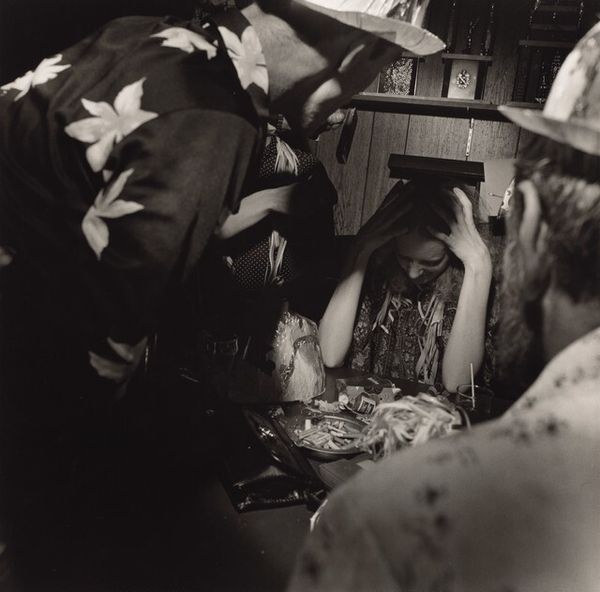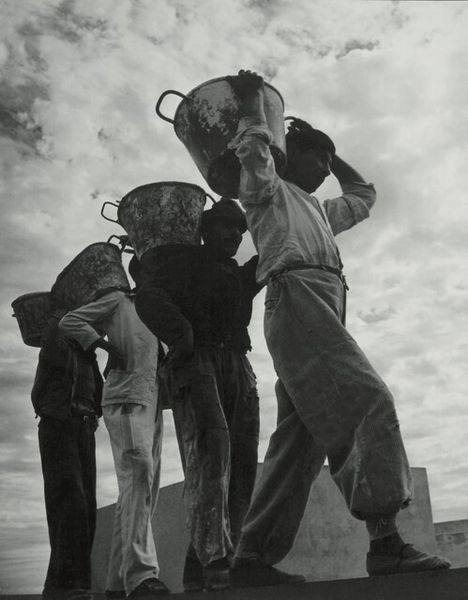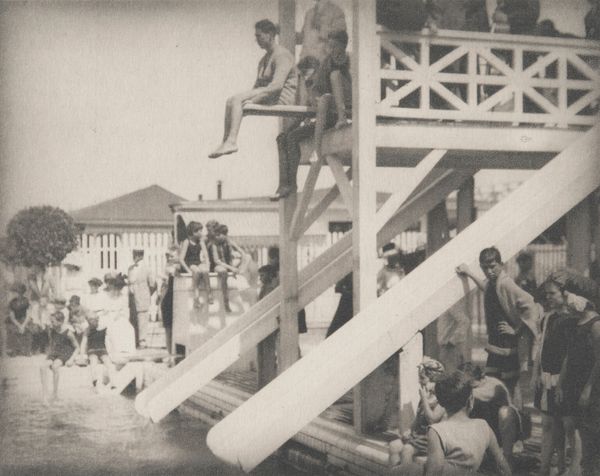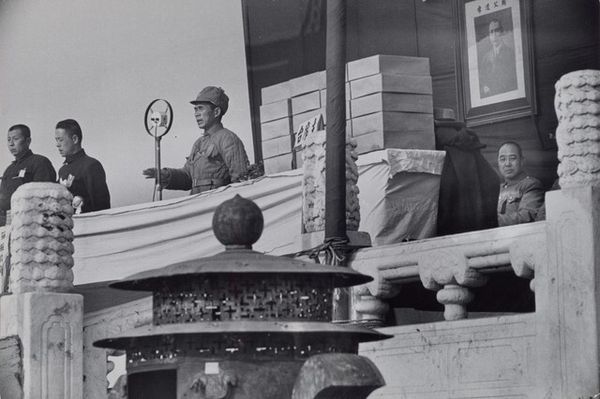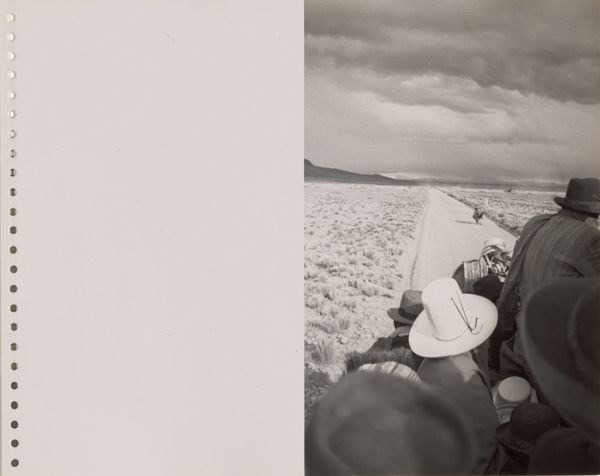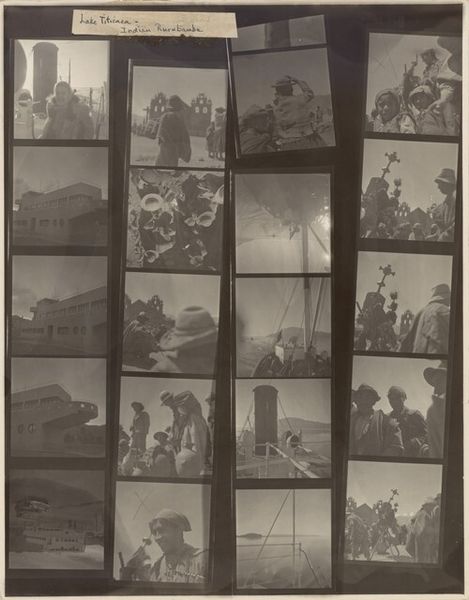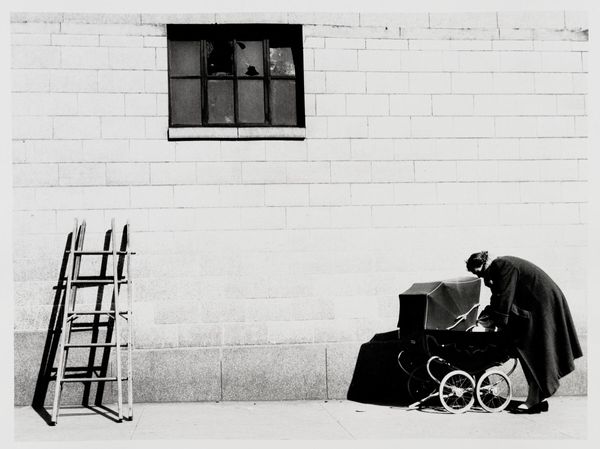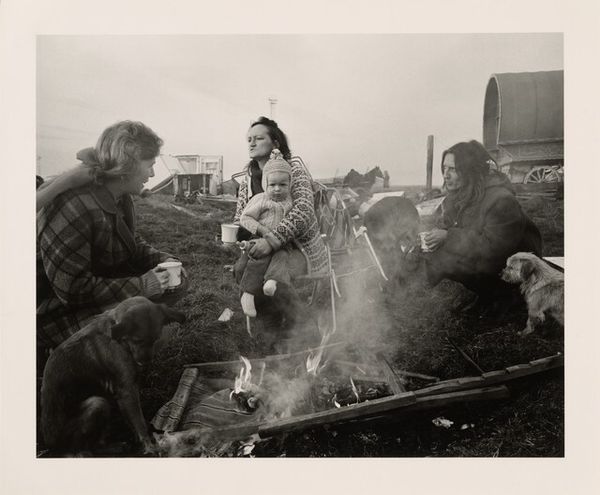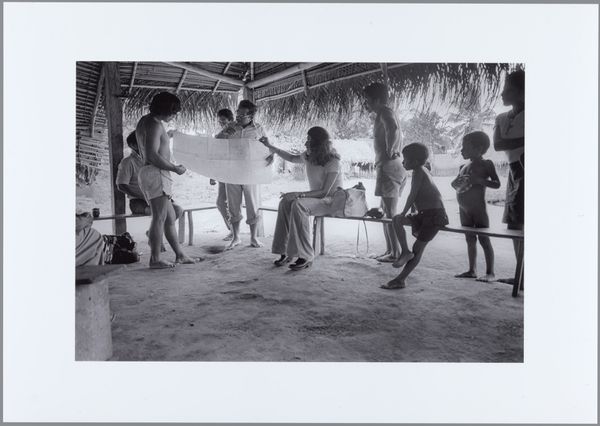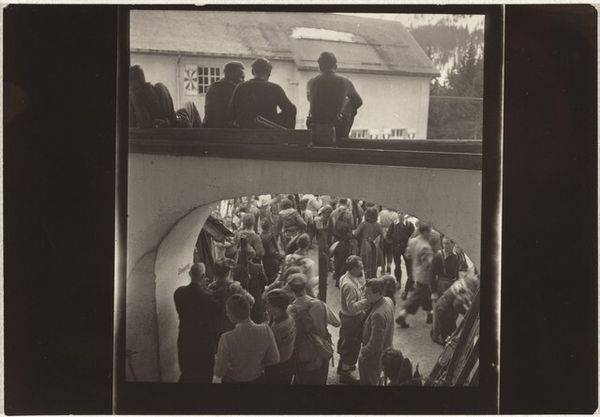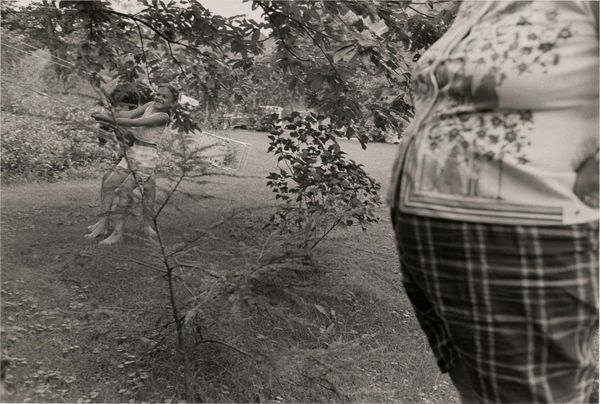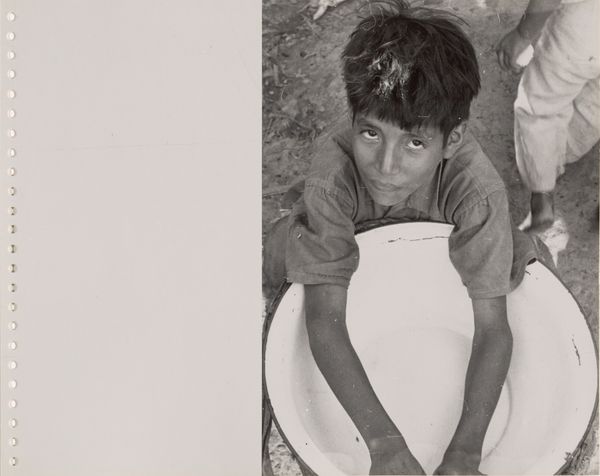
photography, gelatin-silver-print
#
portrait
#
black and white photography
#
photography
#
black and white
#
gelatin-silver-print
#
monochrome photography
#
monochrome
#
monochrome
Dimensions: image: 36.7 × 37.7 cm (14 7/16 × 14 13/16 in.) sheet: 50.3 × 40.3 cm (19 13/16 × 15 7/8 in.)
Copyright: National Gallery of Art: CC0 1.0
Curator: Larry Fink captured this intriguing black and white photograph, “Graduation, Bangor High School, Bangor, Pennsylvania,” in 1979, using a gelatin-silver print technique. Editor: It’s a striking image. The sharp contrast between the light sky and the weighty figures creates a certain unease. All those stripes in the frame—almost oppressive. Curator: It’s interesting you mention the stripes. Fink often uses framing and composition to highlight social dynamics, drawing attention to details we might otherwise overlook at such public events. Graduation, as a social ritual, carries expectations. What might Fink be hinting at? Editor: Well, consider the material reality. Those are rough-hewn wooden steps, that looks like industrial metal; all captured with that stark silver gelatin process. There's nothing glamorous here. The choice of black and white emphasizes texture, the sheer weight and feel of everything. It speaks of labor, production. The adult figure looms large, almost blocking our view of the other onlookers in the background. Curator: Precisely! The adult’s posture could represent the weight of expectation placed on these graduating students. Fink photographed many events, interested in how those occasions reflected larger societal structures and the emotional realities within those structures. Editor: The image’s graininess and those gritty materials give the photograph an almost documentary feel. Fink isn't just capturing a graduation, but maybe commenting on class and labor in this Pennsylvania community. Look at how the faces in the background are blurry, whereas he puts all of the details into showing these specific individuals. Curator: It also suggests a moment in time that might normally pass unnoticed. The act of elevating this in a museum raises questions about what we value and the politics of everyday representation. The very act of him being there as an observer… Editor: Definitely! The physicality is almost overwhelming. But the way it's shown suggests a sense of immediacy but it also isolates, allowing the viewer to analyze those relations, their placement in time and place through material documentation. I think the focus on medium heightens that reality. Curator: Looking at "Graduation," then, reminds us of how artistic choices subtly shape our understanding of public events. Fink captured more than a simple moment in 1979. Editor: Absolutely. He transformed the medium and that particular setting in Pennsylvania into a lens for thinking about social class, labor, and the silent observers always on the periphery of the next graduation class.
Comments
No comments
Be the first to comment and join the conversation on the ultimate creative platform.
